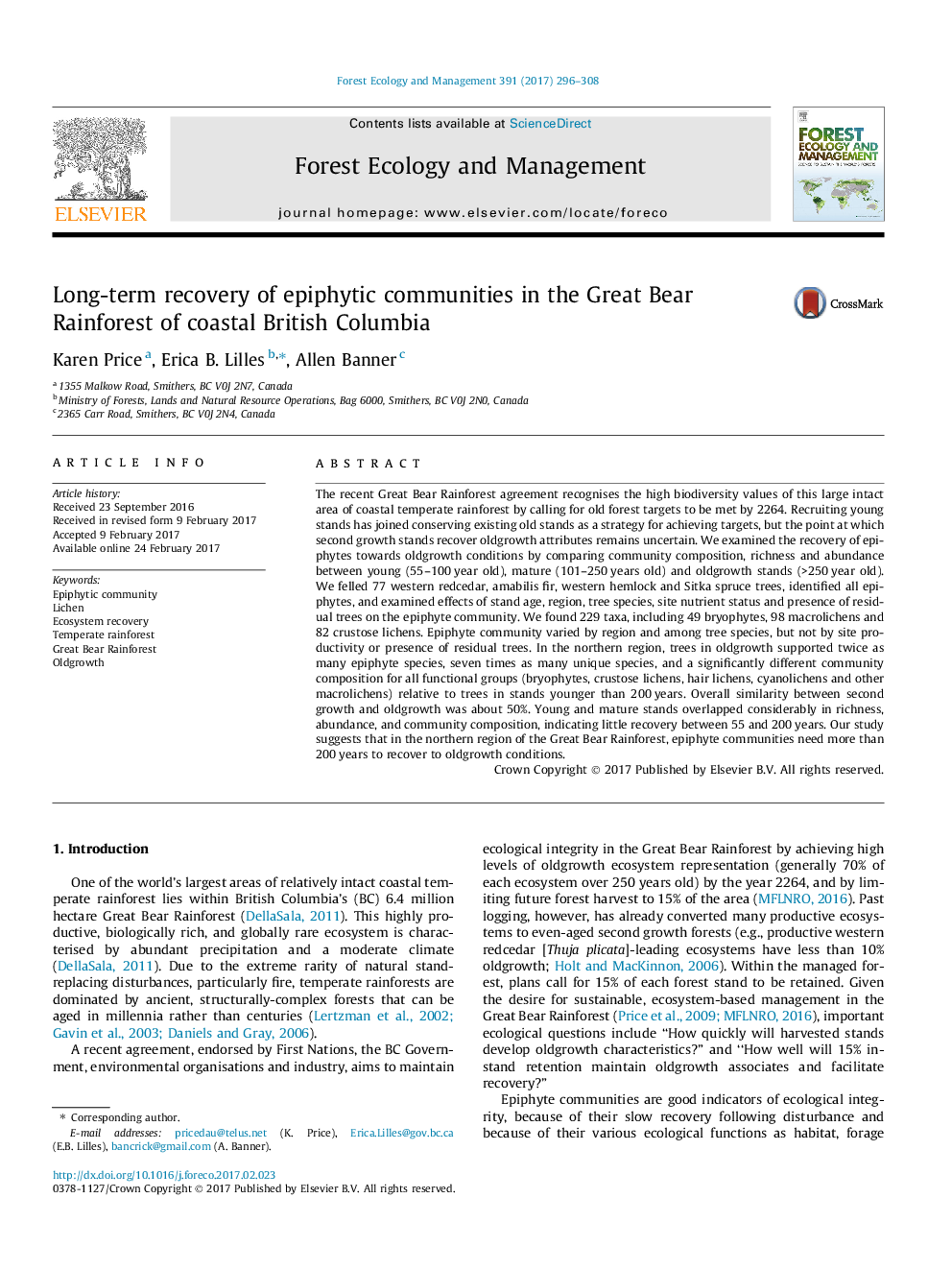| کد مقاله | کد نشریه | سال انتشار | مقاله انگلیسی | نسخه تمام متن |
|---|---|---|---|---|
| 6459454 | 1421367 | 2017 | 13 صفحه PDF | دانلود رایگان |

- Epiphyte communities varied with region, stand age and tree species.
- Oldgrowth trees supported twice as many epiphyte species as second growth trees.
- Second growth and old growth were about 50% similar in overall epiphytic composition.
- Epiphyte communities showed little recovery between 55 and 200Â years.
- Presence of residual trees did not influence epiphyte communities.
The recent Great Bear Rainforest agreement recognises the high biodiversity values of this large intact area of coastal temperate rainforest by calling for old forest targets to be met by 2264. Recruiting young stands has joined conserving existing old stands as a strategy for achieving targets, but the point at which second growth stands recover oldgrowth attributes remains uncertain. We examined the recovery of epiphytes towards oldgrowth conditions by comparing community composition, richness and abundance between young (55-100Â year old), mature (101-250Â years old) and oldgrowth stands (>250Â year old). We felled 77 western redcedar, amabilis fir, western hemlock and Sitka spruce trees, identified all epiphytes, and examined effects of stand age, region, tree species, site nutrient status and presence of residual trees on the epiphyte community. We found 229 taxa, including 49 bryophytes, 98 macrolichens and 82 crustose lichens. Epiphyte community varied by region and among tree species, but not by site productivity or presence of residual trees. In the northern region, trees in oldgrowth supported twice as many epiphyte species, seven times as many unique species, and a significantly different community composition for all functional groups (bryophytes, crustose lichens, hair lichens, cyanolichens and other macrolichens) relative to trees in stands younger than 200Â years. Overall similarity between second growth and oldgrowth was about 50%. Young and mature stands overlapped considerably in richness, abundance, and community composition, indicating little recovery between 55 and 200Â years. Our study suggests that in the northern region of the Great Bear Rainforest, epiphyte communities need more than 200Â years to recover to oldgrowth conditions.
Journal: Forest Ecology and Management - Volume 391, 1 May 2017, Pages 296-308